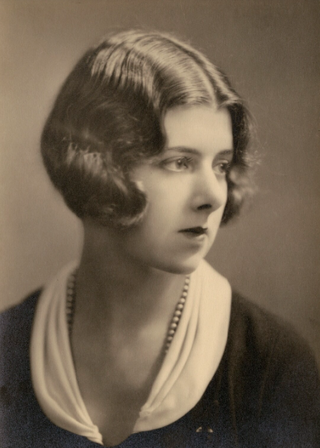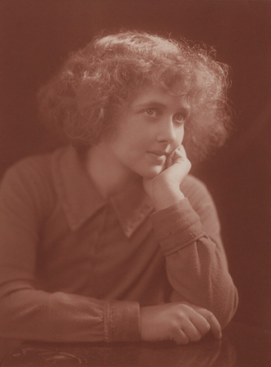
George Louis Palmella Busson du Maurier was a Franco-British cartoonist and writer known for work in Punch and a Gothic novel Trilby, featuring the character Svengali. His son was the actor Sir Gerald du Maurier. The writers Angela du Maurier and Dame Daphne du Maurier and the artist Jeanne du Maurier were all granddaughters of George. He was also father of Sylvia Llewelyn Davies and grandfather of the five boys who inspired J. M. Barrie's Peter Pan.

Finding Neverland is a 2004 biographical fantasy film directed by Marc Forster and written by David Magee, based on the 1998 play The Man Who Was Peter Pan by Allan Knee. The film is about playwright J. M. Barrie and his relationship with a family who inspired him to create Peter Pan. The film earned seven nominations at the 77th Academy Awards, including Best Picture, Best Adapted Screenplay, and Best Actor for Johnny Depp, and won for Best Original Score. The film was the inspiration for the stage musical of the same name in 2012.

Peter Llewelyn Davies was the middle of five sons of Arthur and Sylvia Llewelyn Davies, one of the Llewelyn Davies boys befriended and later informally adopted by J. M. Barrie. Barrie publicly identified him as the source of the name for the title character in his 1904 play Peter Pan, or The Boy Who Wouldn't Grow Up.

George Llewelyn Davies was the eldest son of Arthur and Sylvia Llewelyn Davies. Along with his four younger brothers, George was the inspiration for playwright J. M. Barrie's characters of Peter Pan and the Lost Boys. The character of Mr. George Darling was named after him. He was killed in action in the First World War. He was the first cousin of the English writer Daphne du Maurier.

Sir Gerald Hubert Edward Busson du Maurier was an English actor and manager. He was the son of author George du Maurier and his wife, Emma Wightwick, and the brother of Sylvia Llewelyn Davies. In 1903, he married the actress Muriel Beaumont, with whom he had three daughters: writers Angela du Maurier (1904–2002) and Dame Daphne du Maurier (1907–1989), and painter Jeanne du Maurier (1911–1997). His popularity was due to his subtle and naturalistic acting: a "delicately realistic style of acting that sought to suggest rather than to state the deeper emotions". His Times obituary said of his career: "His parentage assured him of engagements in the best of company to begin with; but it was his own talent that took advantage of them."

John Llewelyn Davies was the second eldest of the Llewelyn Davies boys befriended by Peter Pan creator J. M. Barrie, and one of the inspirations for the boy characters in the story of Peter Pan. He served in the Royal Navy during World War I. He was the first cousin of the English writer Daphne du Maurier.

Nicholas "Nico" Llewelyn Davies was the youngest of the Llewelyn Davies boys, who were the inspiration for J. M. Barrie's Peter Pan and the Lost Boys. He was only a year old when Peter Pan, or The Boy Who Wouldn't Grow Up hit the stage in 1904, and as such was not a primary inspiration for the characters of Peter and the Lost Boys. However he was eight years old when the novel adaptation Peter and Wendy was published, and in later editions of the play, the character Michael Darling's middle name was changed to "Nicholas". He was the first cousin of the English writer Daphne du Maurier.

Doncaster Minster, formally the Minster and Parish Church of St George, is the Anglican minster church of Doncaster, South Yorkshire, England. It is a grade I listed building and was designed by architect designer George Gilbert Scott. The church was built in 1854–1858 to replace an earlier building destroyed by fire. It is an active place of worship and has a Schulze organ, a ring of eight bells, and a celebrated clock by Dent. The church is one of two parish churches to have minster status in South Yorkshire. The other is the minster church of Rotherham.
The church rate was a tax formerly levied in each parish in England and Ireland for the benefit of the parish church. The rates were used to meet the costs of carrying on divine service, repairing the fabric of the church and paying the salaries of the connected officials.

Henry Willis, also known as "Father" Willis, was an English organ player and builder, who is regarded as the foremost organ builder of the Victorian era. His company Henry Willis & Sons remains in business.
The Davies boys were the inspiration for the stories of Peter Pan by J. M. Barrie, in which several of the characters were named after them. They were the sons of Sylvia (1866–1910) and Arthur Llewelyn Davies (1863–1907). Their mother was a daughter of French-born cartoonist and writer George du Maurier and sister of actor Gerald du Maurier, whose daughter was author Daphne du Maurier. Their father was a son of preacher John Llewelyn Davies, and brother of suffragist Margaret Llewelyn Davies.

Arthur Llewelyn Davies was an English barrister of Welsh origin, but is best known as the father of the boys who were the inspiration for the stories of Peter Pan by J. M. Barrie.

St Matthew's Church is in the village of Stretton, Cheshire, England. The church is recorded in the National Heritage List for England as a designated Grade II listed building. It is an active Anglican parish church in the diocese of Chester, the archdeaconry of Chester and the deanery of Great Budworth. Its benefice is combined with that of St Cross, Appleton Thorn.

Angela Busson du Maurier was an English actress and novelist who also wrote two volumes of autobiography, It's Only the Sister (1951) and Old Maids Remember (1965). Her sister was the novelist Daphne du Maurier, and her grandfather was George du Maurier, a writer and cartoonist.

Holy Trinity Church, Coventry, is a parish church of the Church of England in Coventry City Centre, West Midlands, England.

St Mary's Church, formerly St Mary's Chapel, is a Grade II* listed Roman Catholic church in Hampstead, London, UK.

Christ Church, Hampstead, is a Church of England church in Hampstead, London. It is a church with particular connections to the old village of Hampstead and the Heath.

Finding Neverland is a musical with music and lyrics by Gary Barlow and Eliot Kennedy and a book by James Graham adapted from the 1998 play The Man Who Was Peter Pan by Allan Knee and its 2004 film version Finding Neverland. An early version of the musical made its world premiere at the Curve Theatre in Leicester in 2012 with a book by Allan Knee, music by Scott Frankel and lyrics by Michael Korie. A reworked version with the current writing team made its world premiere in 2014 at the American Repertory Theater in Cambridge, Massachusetts. Following completion of its Cambridge run, the production transferred to Broadway in March 2015.

Jeanne du Maurier was an English artist. She was the third daughter of Sir Gerald du Maurier and Muriel Beaumont, and sister of writers Daphne and Angela du Maurier.

St Robert of Newminster Church is a Roman Catholic parish church in Morpeth, Northumberland, England. It was built from 1848 to 1849 in the Early English Gothic style. It is located on Oldgate in the town, overlooking the River Wansbeck. It is a Grade II listed building.






















